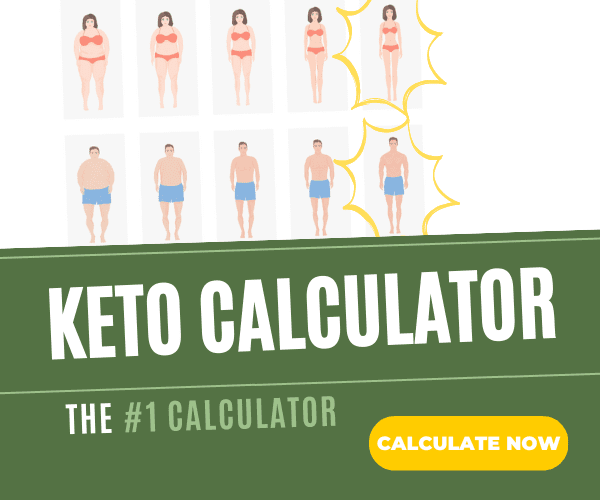
The vibrant, shiny, ruby-red tomato is tasty, nutritious food. Prominent in Italian cuisine, the tomato brings a whole lot of flavor to a range of dishes from salsa to chili and sandwiches to chicken and veggie bakes. Are tomatoes suitable for a ketogenic diet?
What are Tomatoes?
Tomatoes are commonly considered a vegetable, but botanically speaking, they’re a fruit. The tomato (Solanum Lycopersicum) is from the nightshade family native to South America.
Technically a fruit, tomatoes are usually eaten and prepared like a vegetable. They’re typically red when mature, but they can come in various colors, including purple, green, and orange. Some subspecies of tomatoes actually have different shapes and flavors!
Tomatoes are a rich source of vitamin C and K and folate and potassium. They’re also a significant dietary source of lycopene — a red pigment and antioxidant linked to numerous health benefits, including a reduced risk of cancer and heart disease [1].
Are Tomatoes Keto-Friendly?
Fruits like pears and apples contain around 20-25 grams of carbs per serving, categorizing them with other carb-rich foods like legumes and grains. These foods are limited or avoided on a ketogenic diet [2] [3].
Tomatoes are a little different, and they’re lower in carbs compared to many other fruits. With a high water content of around 95%, the other 5% of tomatoes are mainly fiber and carbohydrates.
A small 100-gram raw tomato has:
0.9 grams of protein
3.9 grams of carbs
2.6 grams of sugar
1.2 grams of fiber
0.2 grams of fat [4]
100 grams or 3.5 ounces of tomatoes provides around 2-3 grams of net carbs, which is as much as 10 times fewer net carbs than most other fruits.
Generally speaking, raw tomatoes have fewer than 5 grams of carbs, with almost 70% of the carb content from simple sugars, such as fructose and glucose. Most of the fiber in tomatoes (87%) are insoluble in the form of cellulose, lignin, and hemicellulose [5] [6] [7].
To calculate net carbs, you take the total carb content of food and subtract the fiber content. Tomatoes are easy to fit within the daily carb limit of a keto diet, similar to other low-carb fruits like avocado and cucumber.
Sundried tomatoes are a possible exception, and they might be less keto-friendly than other tomato-based foods. Sundried tomatoes have lower water content and can contain around 23.5 grams of net carbs per cup, which is a lot more than the same serving of raw tomatoes. You might need to limit how many sundried tomatoes you eat on keto. The carb counts vary slightly depending on the type of tomato you choose [8] [9].
Remember, just because tomatoes are keto-friendly doesn’t mean all tomato products are. For example, many tomato sauces, juices, paste, and salsas contain sneaky added sugars. Always check the ingredients and go for keto-friendly brands that don’t have extra sugar.
Best Ways to Include Tomatoes in Your Ketogenic Diet!
Use tomatoes in a:
- Salsa
- Dressing
- Sauce or Marinade
- Pasta or Veggie Bake
- Salad
- Jam
- Soup
Eat them stuffed, grilled, in skewers, and so much more! Try one of these delicious keto recipes showcasing the juicy tomato:
- Keto Breakfast Lasagna
- Keto Meatloaf
- Ricotta Parmigiano Gnocchi with Tomato Sauce
- Mini Keto Pizza on Cloud Bread
- Keto Summer Caprese Salad
What Are Your Favorite Ways to Eat Tomatoes on Keto?
Share your top recipes starring the juicy tomato.
References
Story, E. N., Kopec, R. E., Schwartz, S. J., & Harris, G. K. (2010). An update on the health effects of tomato lycopene. Annual Review of Food Science and Technology.
United States Department of Agriculture. Pear, Raw.
United States Department of Agriculture. Apple.
United States Department of Agriculture. Tomato.
Claye, S. S., Idouraine, A., & Weber, C. W. (1996). Extraction and fractionation of insoluble fiber from five fiber sources. Food Chemistry, 57(2), 305-310.
United States Department of Agriculture. Tomatoes, Yellow, Raw.
United States Department of Agriculture. Tomatoes, Orange, Raw.
United States Department of Agriculture. Tomatoes, Sun-Dried.
United States Department of Agriculture. Tomatoes, Red, Dried.














